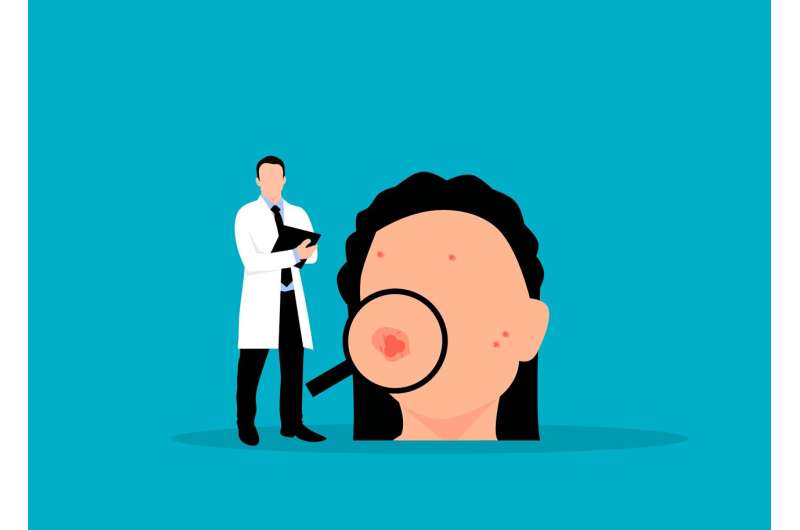
As the most serious type of skin cancer, a melanoma diagnosis carries emotional, financial and medical consequences. That’s why recent studies finding that there is an overdiagnosis of melanoma are a significant cause for concern.
“Overdiagnosis is the diagnosis of disease that will not harm a person in their lifetime. If melanoma is being overdiagnosed, it means that too many people are getting the scary news that they have cancer, and receiving and paying for unnecessary treatment,” said Kathleen Kerr, professor of biostatistics in the UW School of Public Health.
Kerr recently published results of a study involving more than 100 dermatopathologists—pathologists who specialize in skin diseases and who diagnose melanoma—to find out if they believe that melanoma overdiagnosis is a public health issue in the U.S. and whether that belief affects their own conclusions. The pathologists were given biopsy slides to diagnose and were surveyed on their perceptions of overdiagnosis.
Kerr discussed the results of this study, published April 20 in JAMA Dermatology, in the following Q&A with UW News:
How can you know if a disease is being overdiagnosed?
Kathleen Kerr: Overdiagnosis is often studied by looking at population-level data rather than individual cases. Melanoma diagnoses have been rising in the U.S. If there were truly an epidemic of melanoma, we would expect that deaths from melanoma to show a corresponding rise, since there hasn’t been a major breakthrough in treatment during this time. Yet melanoma deaths have been remarkably constant. This suggests that the rise in melanoma diagnoses is largely due to overdiagnosis.
Why does this happen when it comes to melanoma?
Kerr: The problem is multifaceted. Most of us who aren’t doctors think that if we have something on our skin that could possibly be cancer, and we get it biopsied, then the pathologist’s diagnosis after examining the skin tissue under a microscope is definitive. Reality is more complicated.
Skin abnormalities are some of the most challenging cases for pathologists to diagnose. Previous research has shown that different pathologists who examine the same skin biopsy will sometimes give different diagnoses—to a very surprising degree. The same pathologist examining the same case on two different occasions might even give two substantially different diagnoses.
While advanced melanoma is fairly easy for pathologists to diagnose, difficulties arise for cases where the biopsy shows some kind of abnormality that doesn’t appear to be melanoma but might be a precursor to melanoma. These are the instances where pathologists show the most diagnostic variability, and the cases that raise the possibility of overdiagnosis.
What did find in your study?
Kerr: The first component of our recent paper was a survey of practicing dermatopathologists’ perceptions about overdiagnosis. About half perceive that noninvasive melanoma is over-diagnosed and one-third perceive that invasive melanoma is overdiagnosed. Also, a majority of dermatopathologists agree that they see cases that should not have been biopsied in the first place. This points to overdiagnosis as a system-wide issue—a problem that may be rooted in too many skin biopsies.
The second component of our study was looking for relationships between pathologists’ perceptions on overdiagnosis and how they diagnosed actual skin biopsies. We thought that those who think invasive melanoma is overdiagnosed might be more reserved in making this diagnosis, but this was not true. In fact, those who think invasive melanoma is overdiagnosed were slightly more likely to diagnose invasive melanoma compared to other dermatopathologists examining the identical cases.
What do you think is the importance of this finding?
Source: Read Full Article


